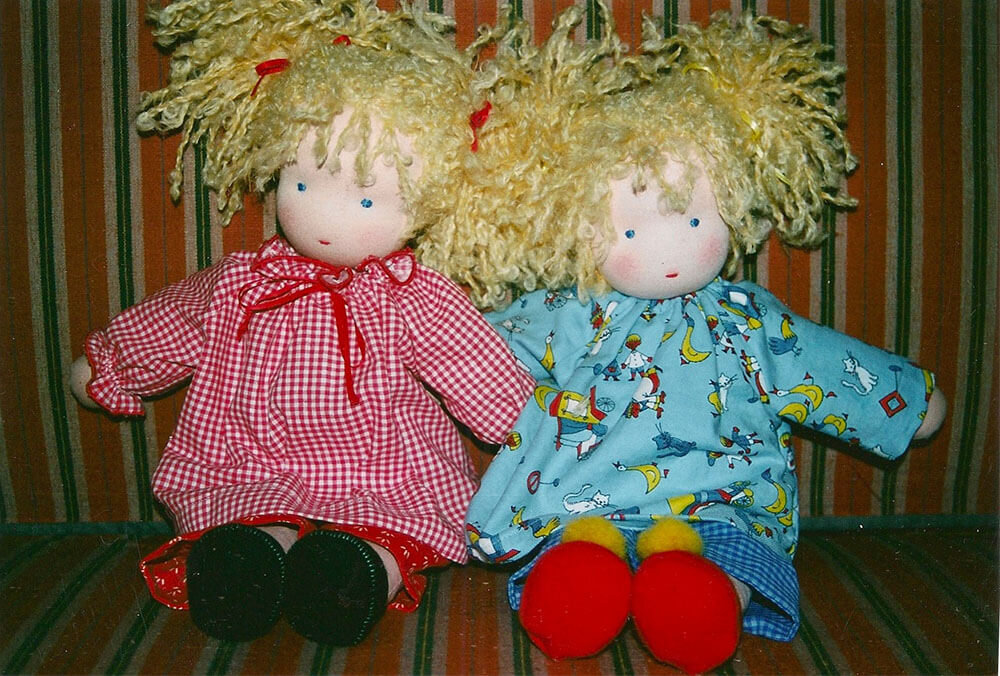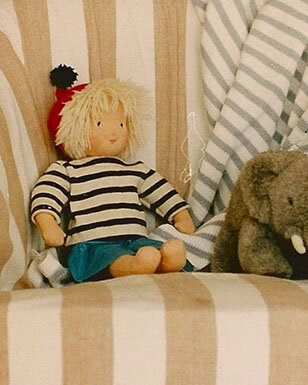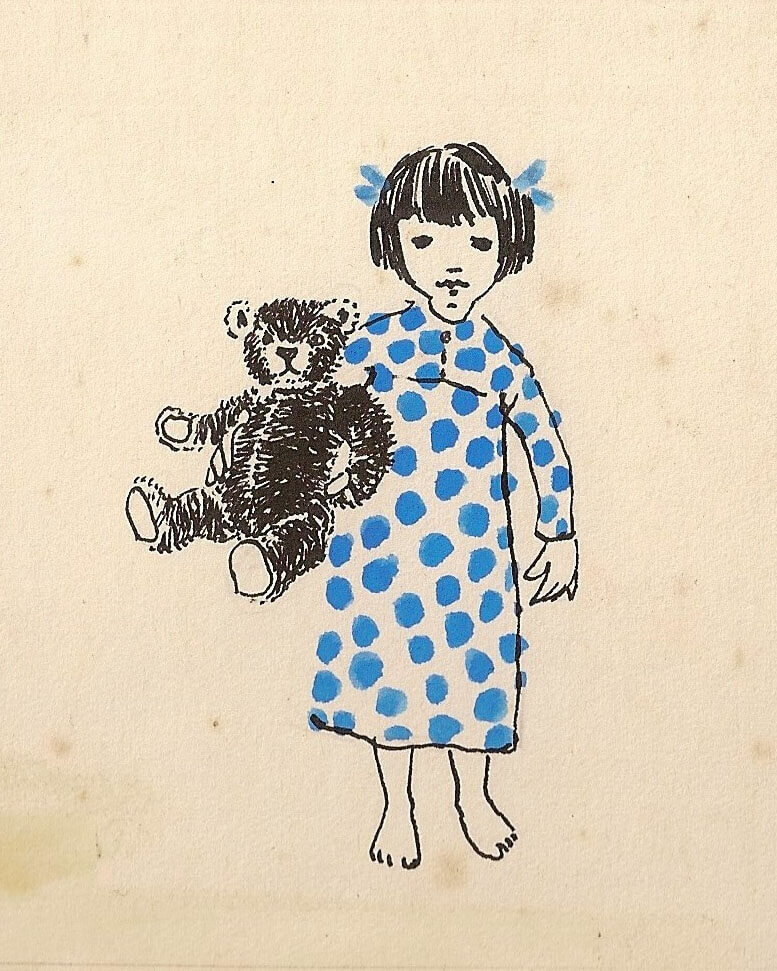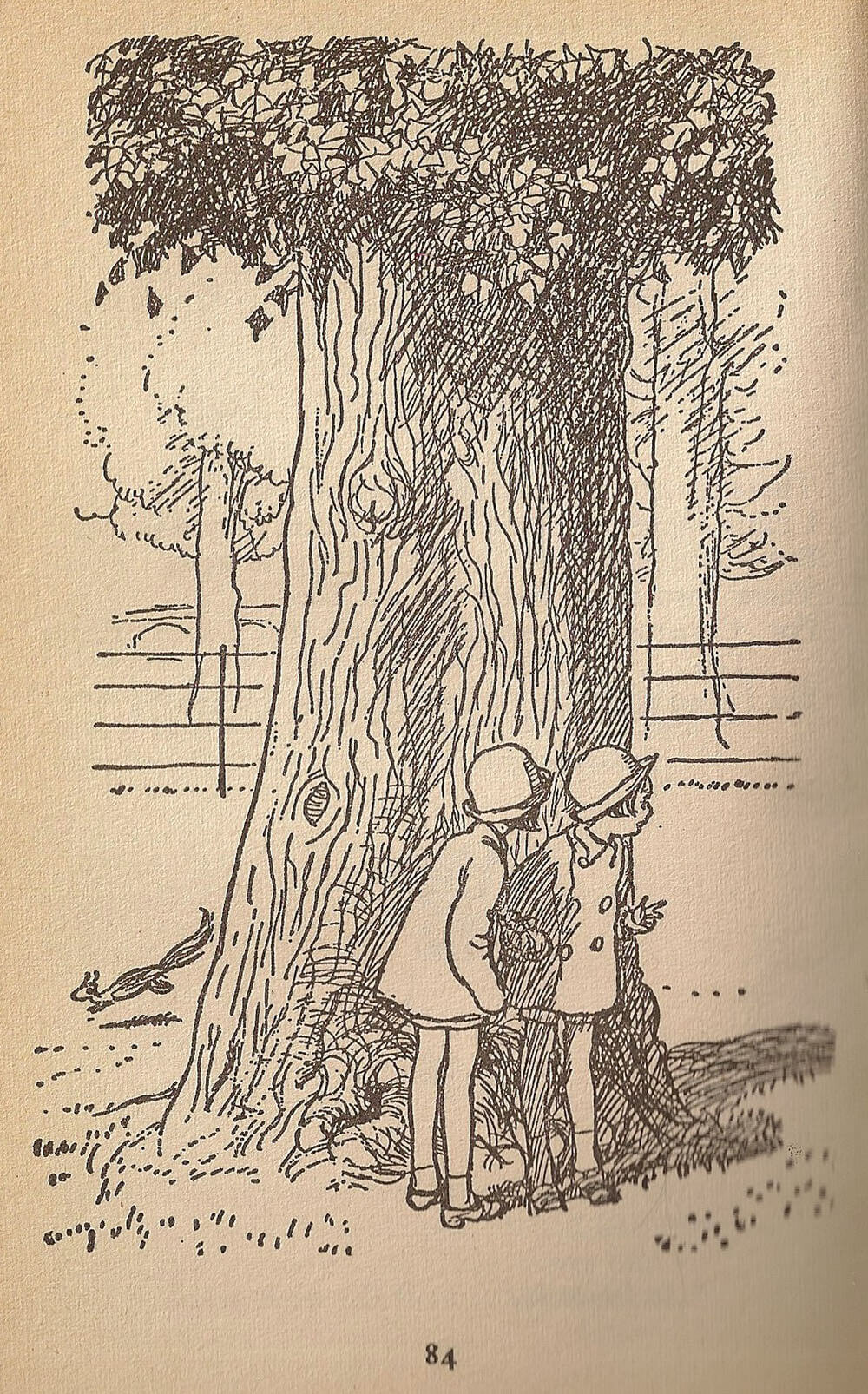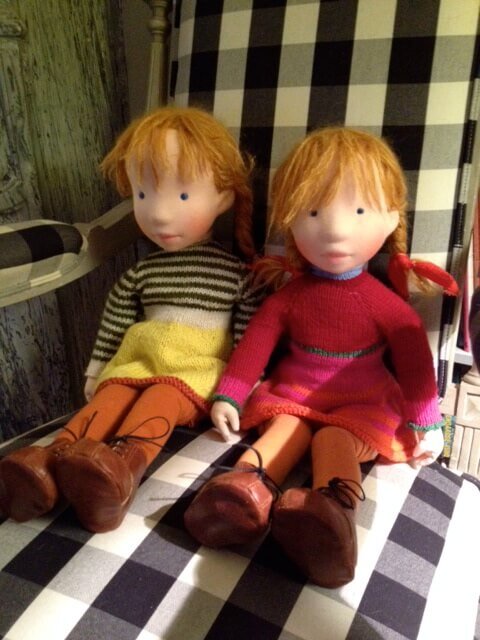My Story part 3
A doll for children to play with
Traditional antroposophical/Waldorf dolls I made years ago when a plain Waldorf doll was requested.
My mid 80tis doll with nose
The traditional Waldorf doll was the point of departure.
The first Waldorf doll I made mid 80tis, had a nose. I always felt there should at least be a nose. Ever since I’ve been searching for ways to realise, apart from the nose, more facial features.
Being trained as an illustrator I tried more and more to make my dolls look like the children I once drew myself.
The children I once drew.
Shepars drawings for A.A. Milne’s books of Winnie the Pooh, must have had a consideralbe influence on me. Notice the legs and the hats!
Those hands and legs!
How it began
So it started with the glove puppets. That gave me the idea to make the usual doll with the stuffed body and limbs with a similar head.
Waldorf next level so to speak.
The Waldorf (-inspired) doll with the sculpted head originates from these first dolls I presented to the public. They got a lot of attention and I got many requests to reveal how it was done. The rest is history.
These glove puppets, it must have been beginning of this millennium, were the first with the articulated heads I still make today. With small alterations, but the method stayed the same.
Each doll’s conception literally starts as a sheepskin I clean and wash myself. The wool becomes the stuffing of the doll’s body. Wool also becomes the basis for the doll’s head. The latter follows a self developed, hand process. The face is “sculpted” in wool, so to speak., with a felting needle. There is no pre-existing mold; every single doll’s head is a one-of-a-kind creation. They never look the same.
The sitting and the -free- standing doll
It has been a process of years and years, of trial and error, of inventing, of figuring out and constructing and…..unpicking again (lots and lots of unpicking; often to change for only half a millimeter). Of hard thinking and discovering by chance. Always following my own path. It’s still an ongoing process of experimenting with the expression of the face; with the construction of the patron for the proportions of the body and the stance; with the use of the right material (though always natural). The materials I use are Waldorf. The procedure is, though all handmade, only to a certain extent Waldorf, in my opinion. It is a world apart from the original, iconic, antoposphical/Waldorf doll.
Transforming the Waldorf doll into my own version
Over the years the doll developed from a Waldorf sitting doll into my version of it…
The first edition of sitting dolls dating back to circa 2006
Edition winter 2013
…and finally into the – free standing - doll as it is today: the representation of the image of a child; in the posture, the way it holds its head, the arms hanging loosely along the body. In the way it looks unprejudiced and open into the world. That’s my main focus: The rendering of a childlike expression, in face and body.
Though I monomaniacally tend to work on the square millimeter, I don’t aim for a meticulous realistic copy of a child. Nor for particular types or characters. The cloth material I work with gives the right amount of simplification and stylization I am aiming at. The mere indication of hair by using woolen yarn is as much in line with this stylistic quality as indicating the eye by a simple embroidered dot. For me this is the most convincing way of bringing a doll to live. It took me a while to get used to the use of mohair, teeswater, suri alpaca etc. sewn into a weft (mostly by myself!) and crocheted into a cap.
The ‘free standing doll’ I developed for display purposes. It stands on its own without an outside armature or a wire frame inside. It is, so to speak, a soft sculpture. A figurine of a child made of cloth and wool. As with the sitting doll there are no harsh ridges or any parts that can be harmful to children. (The standing doll can sit as well. In the hips the legs are disc jointed.)
A doll to play with
But it always is a doll to play with, to cuddle and to hold in your arms while sleeping (even the head, though firm, is still squeezable). Like a genuine Waldorf doll, it’s soft and warm. Apart from enjoying her hair and dressing up, a doll should be a ‘person’ you can relate to; a “confident”, a friend. That’s what my dolls were to me being a child. That’s what I certainly experienced in the way my daughter was dealing with her dolls: Re-enacting situations with others in her daily life at home and - specially in the case of my daughter – in school.
Usually my daughter disappeared in her doll corner when coming home from school. Now and than, certainly in case of a celebration with cake! , her brother was willing to join.
Dolls for emotional and social development
That is what children do when playing with dolls. It helps them in their emotional and social development. Though I go much further in naturalistic effect than the schematic human representation of the Waldorf doll, what stays the same is the neutral expression that makes its own interpretation of emotions and identification possible for a child. The doll “speaks” to him/her and he/she speaks through the doll.
That is one important objective. The other is the display purpose. My free-standing doll might inspire you and/or your child to design and make clothes for.
About the maker
Aldegonde Ceelen is an Amsterdam based doll maker and designer of miniature clothes. Her dolls are one of a kind and free-standing - like statuettes. They are made entirely of natural materials. (Aldegonde graduated in book illustration at the art academy of Maastricht and has an MSc degree in art history from the University of Amsterdam.)
Share this blog on social media:

